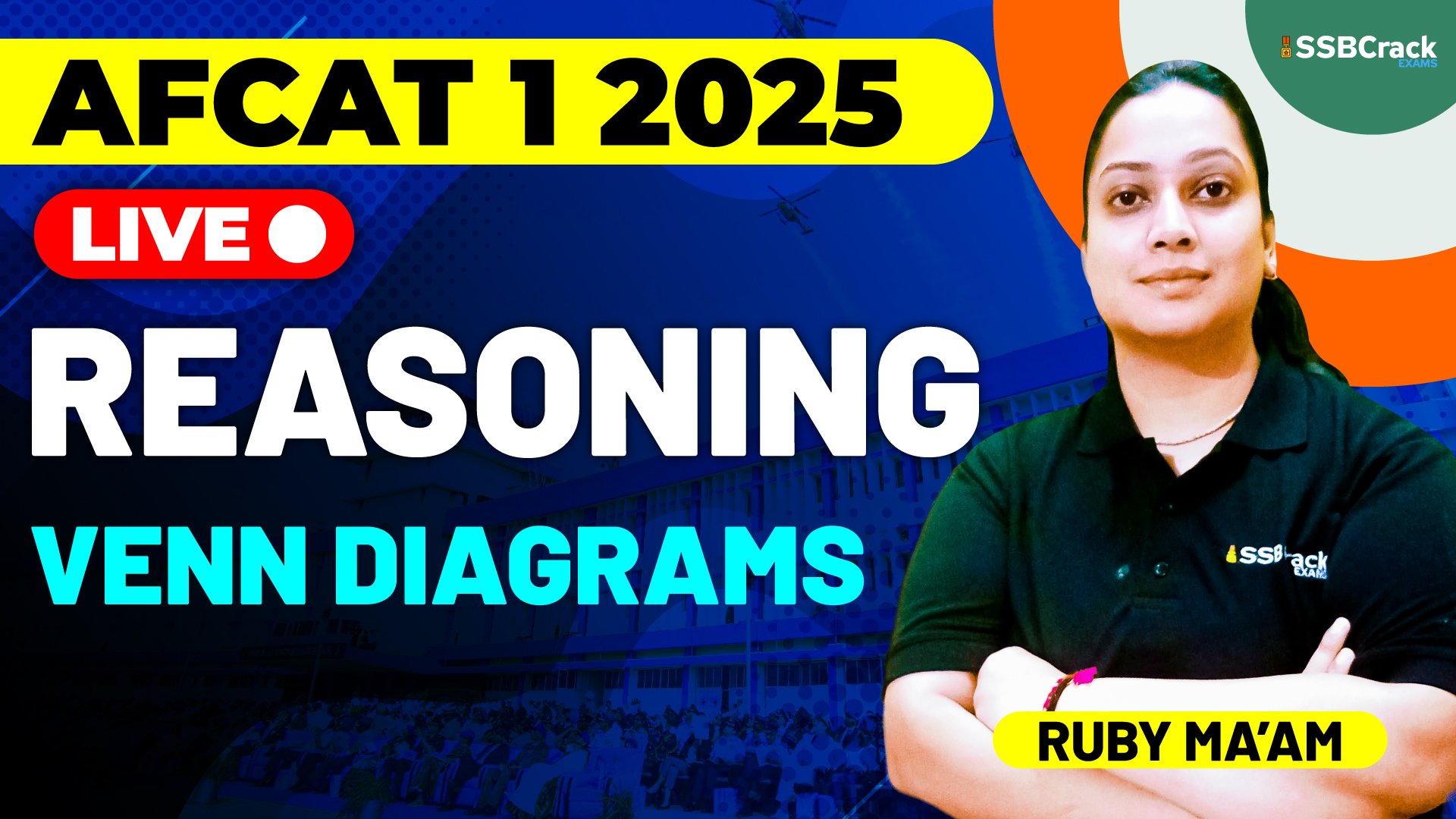When preparing for the Air Force Common Admission Test (AFCAT), aspirants often focus heavily on subjects like mathematics, general knowledge, reasoning, and English. One topic that sometimes gets overlooked but can be immensely helpful in tackling various reasoning and analytical problems is Venn diagrams. This powerful visual tool not only aids in solving problems but also helps aspirants understand complex logical relations quickly and accurately. Let’s explore why Venn diagrams hold significant importance for AFCAT aspirants.
1. Simplifying Logical Relationships
Venn diagrams are used to represent relationships between different sets. These relationships are visually depicted using overlapping circles, where each circle represents a set. In AFCAT, logical reasoning questions often ask you to deduce relationships between groups. Venn diagrams make these relationships clear, allowing you to visualize intersections, unions, and exclusions, making it easier to solve problems accurately.
For instance, a common question type in reasoning involves identifying the common elements between different groups (like people who like sports, music, and reading). Without a Venn diagram, keeping track of these relationships can become confusing. By drawing a simple diagram, you can see the overlaps and differences at a glance.
2. Quick Decision Making
Time management is a crucial factor in cracking competitive exams like AFCAT. Solving reasoning or mathematical problems verbally can often take more time. However, Venn diagrams present a quick visual representation, helping you arrive at the right answer more efficiently.
Consider a typical problem involving syllogisms or set theory. The answer is often more obvious when represented visually. A Venn diagram cuts through the complexity, enabling you to solve the problem in a matter of seconds, thereby saving precious exam time.
3. Useful in Probability and Set Theory
AFCAT’s quantitative aptitude section often includes questions based on probability and set theory. For problems involving multiple groups, Venn diagrams provide a simple way to visualize the data. This is particularly useful in problems where you are asked to calculate probabilities based on the number of elements shared between sets (e.g., people who like both tea and coffee).
Without a Venn diagram, students might get confused with the overlapping elements and fail to correctly count the total. Drawing a simple two or three-set Venn diagram can help you ensure that you’re not missing any important details and increase your chances of answering correctly.
4. Enhancing Accuracy in Data Interpretation
Data interpretation questions are common in AFCAT exams, particularly those involving percentages, ratios, or comparisons between different categories. A Venn diagram provides a clear way to categorize and compare data, minimizing the risk of misinterpretation.
For example, in a problem involving survey results where people like various forms of transportation, using a Venn diagram helps you sort and group data logically. You can then easily answer questions about specific groups, such as how many people like both cars and bikes but not public transport.
5. Aiding in Syllogism Problems
Venn diagrams are also extremely helpful in solving syllogism problems, a staple in the reasoning section of AFCAT. Syllogisms involve drawing conclusions based on given premises. With the help of Venn diagrams, you can visually break down the logic and test whether the given conclusions logically follow from the premises.
For instance, if you are given two statements like “All birds are animals” and “Some animals are mammals,” a Venn diagram can help you see the potential relationships between these groups and identify valid or invalid conclusions.
6. Improving Analytical Skills
Using Venn diagrams to solve problems trains your brain to think in a structured and organized manner. AFCAT is not just about rote memorization but also about applying analytical skills under pressure. The more you practice with Venn diagrams, the better your ability to interpret complex information visually becomes. This not only helps in reasoning but also improves your overall cognitive ability to solve various problem types.
How to Master Venn Diagrams for AFCAT
- Practice Regularly: Solving as many reasoning and quantitative problems using Venn diagrams will make you proficient. It’s important to practice questions from previous AFCAT papers to get an idea of the question patterns.
- Understand Set Operations: Familiarize yourself with terms like union, intersection, complement, and difference. These are the foundation of any Venn diagram-based question.
- Use Online Tools: There are several online platforms that offer interactive Venn diagram problems. Utilize them for hands-on practice.
- Work on Time Management: Try solving Venn diagram problems under timed conditions to improve your speed without compromising accuracy.
Conclusion
For AFCAT aspirants, mastering Venn diagrams can be a game-changer in the reasoning and quantitative sections. They simplify complex data, provide clarity on logical relationships, and enhance your overall problem-solving skills. By practicing regularly and applying Venn diagrams to a wide variety of problems, you can significantly improve your speed and accuracy, which is key to excelling in the AFCAT exam.



















